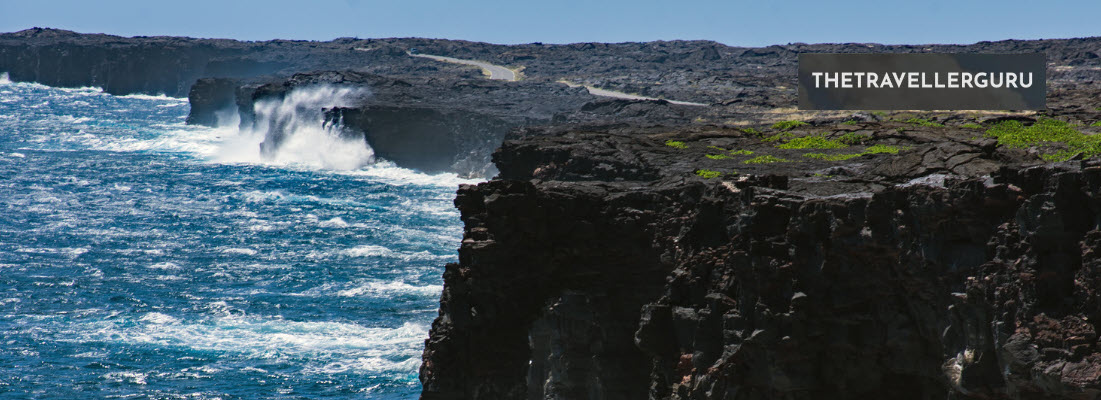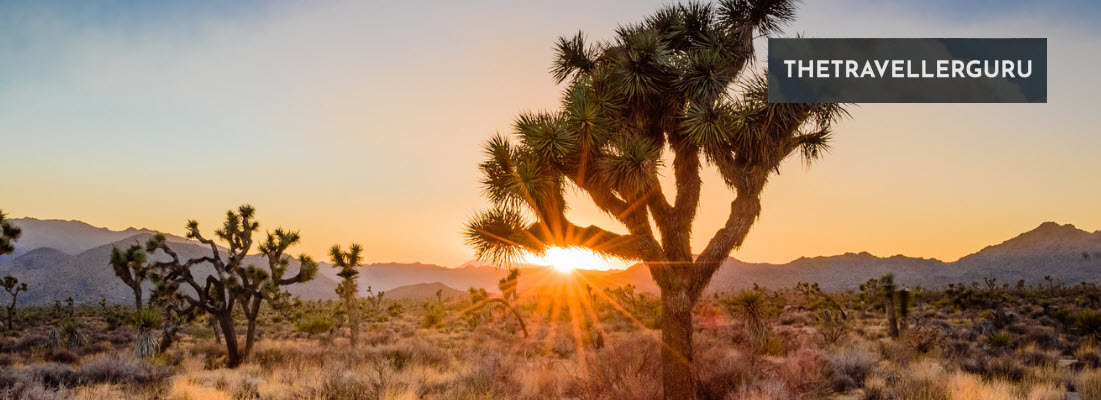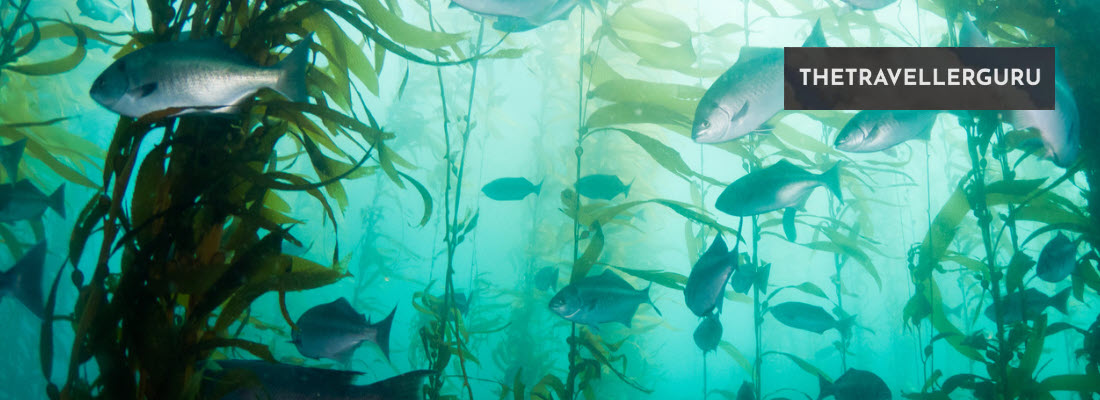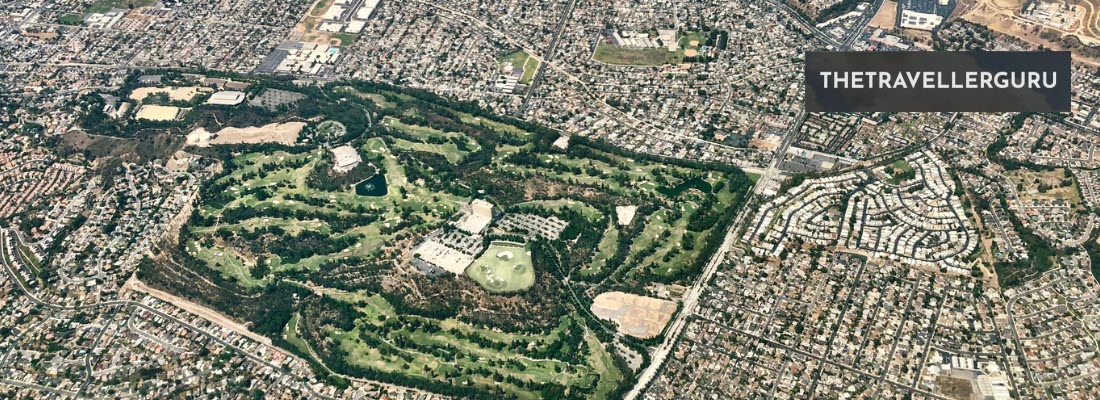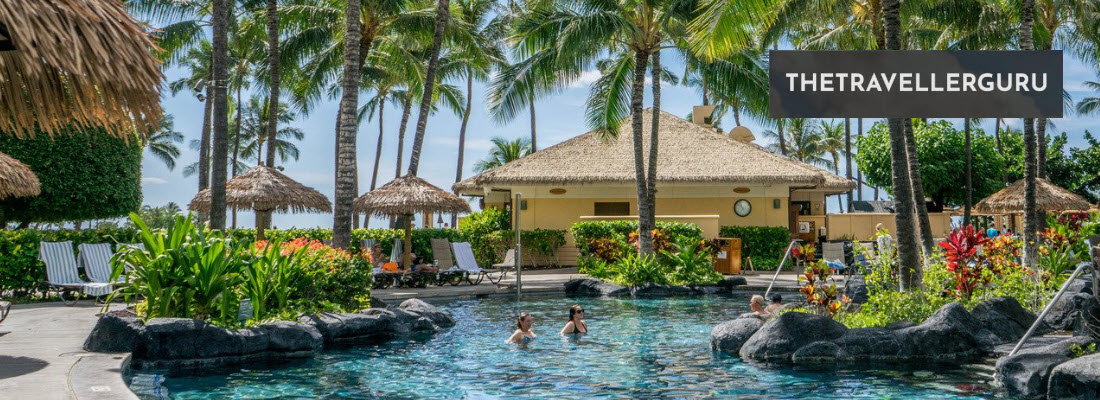Hey there my traveling adventurers and welcome to my post where we will check out my 7 best national parks in Hawaii this year. Hawaii’s national parks offer some of the most remarkable and distinctive natural landscapes in the United States. These parks preserve not only the diverse ecosystems and volcanic terrains of the islands but also hold significant cultural importance.
Among these, Hawaiʻi Volcanoes National Park stands out, featuring two of the world’s most active volcanoes. Another gem is Haleakalā National Park on Maui, which presents a stark contrast with its serene volcanic landscapes and breathtaking sunrises. ‘
- Hawaiʻi Volcanoes National Park
- Haleakalā National Park
- Puʻuhonua o Hōnaunau National Historical Park
- Kaloko-Honokōhau National Historical Park
- Kalaupapa National Historical Park
- The Pearl Harbor National Memorial
- The Papahānaumokuākea Marine National Monument
Map Of Hawaii’s Best National Parks
Use this map to find the locations of the best national parks Hawaii has to offer in the post below:
Best National Parks in Hawaii
Hawaii boasts some of the most unique and visually spectacular national parks in the United States. Each park offers a unique experience, from sheer mountain cliff faces and waterfalls to vast tropical rainforest. Here is an outline of the best of them:
1. Hawaiʻi Volcanoes National Park
Hawaiʻi Volcanoes National Park, located on the Big Island, offers a unique and dynamic landscape that is both awe-inspiring and humbling. As home to two of the world’s most active volcanoes, Kīlauea and Mauna Loa, the park provides a rare opportunity to witness the Earth’s creative and destructive power up close.
Visitors to the park can explore vast volcanic landscapes, walk through old lava tubes and see the glow of lava flows under the night sky. The park’s diverse ecosystems and sacred sites also offer a deep connection to the natural world and the rich cultural traditions of the Hawaiian people.
Access Requirements
- Entrance Fees: There is an entrance fee for vehicles, pedestrians, and bicyclists. The pass is valid for 7 days. Up to date date entrance fee costs can be found here.
- Permits: Special activities, such as backcountry hiking and camping, require permits.
- Operating Hours: The park is open 24 hours a day, year-round, but certain areas and facilities have specific operating hours.
Location
Hawaiʻi Volcanoes National Park is located on the southeastern side of the Big Island of Hawaii. The closest towns are Hilo, 30 miles to the northeast, and Kailua-Kona, about 96 miles to the west.
Things to Do
- Crater Rim Drive Tour: A scenic drive that offers stunning views of the Kīlauea Caldera.
- Hike to the Lava Flow: Depending on volcanic activity, visitors may be able to hike to see active lava flows.
- Thurston Lava Tube (Nāhuku): Walk through a 500-year-old lava tube.
- Kīlauea Iki Trail: A challenging hike that descends into a crater left from a 1959 eruption.
- Jaggar Museum and Hawai‘i Volcano Observatory: Offers educational displays and a good viewpoint for Halema‘uma‘u Crater (Note: Availability of facilities like the Jaggar Museum can vary due to volcanic activity and renovations).
Nearby Accommodation
- Volcano House: The only hotel located within the park, offering rooms with views of the Kīlauea caldera.
- Vacation Rentals and Bed & Breakfasts: Numerous options are available in the nearby Volcano Village offering a range of accommodations from cozy cottages to luxurious lodges.
- Camping: The park has two drive-in campgrounds, Nāmakanipaio and Kulanaokuaiki. Nāmakanipaio is more developed and offers restrooms and water.
Additional Tips
- Safety: Stay informed about current volcanic activity and respect all park rules and closures. Volcanic gases can be hazardous to health.
- Preparation: Weather can be unpredictable and areas of the park are remote. Bring water, food and appropriate clothing.
Visiting Hawaiʻi Volcanoes National Park is an unforgettable experience that highlights the beauty and power of nature. Whether you’re exploring the vast landscapes, learning about the cultural significance of the land, or simply enjoying the tranquility of the park, it’s a place that touches the heart of all who visit.
Check out these: Best Hiking Trails on the Big Island
2. Haleakalā National Park
Haleakalā National Park, located on the island of Maui, is a landscape of stark contrasts and breathtaking beauty. Dominated by the massive crater of Haleakalā volcano, the park spans from the summit district’s moon-like landscapes down to the lush Kīpahulu District on the eastern coast.
This park offers visitors a chance to explore diverse ecosystems, from barren volcanic deserts to vibrant subtropical rainforests and watching the sunrise from the summit of Haleakalā is a spiritual experience for many, showcasing the awe-inspiring beauty of nature. The park also serves as a sanctuary for endangered species and is steeped in Hawaiian cultural significance.
Access Requirements
- Entrance Fees: There is an entrance fee for vehicles, pedestrians and bicyclists, which provides access for 3 days.
- Reservations: For sunrise viewing at the summit, reservations are required due to the popularity of this activity and these reservations must be made in advance online.
- Operating Hours: The park is open 24 hours a day, year-round. However, certain areas and facilities have specific operating hours.
Location
Haleakalā National Park is located on the eastern part of Maui. The summit district can be accessed from Kahului via the Haleakalā Highway (Route 37) to the Haleakalā Crater Road (Route 378). The Kīpahulu District is accessible via the Hāna Highway (Route 360), which takes you along Maui’s northeastern coast.
Things to Do
- Sunrise/Sunset Viewing: The summit of Haleakalā is one of the best places in the world to watch the sunrise or sunset.
- Hiking: There are numerous trails ranging from easy walks to challenging backcountry hikes. Popular trails include the Sliding Sands Trail and the Pipiwai Trail to the 400-foot Waimoku Falls in the Kīpahulu District.
- Stargazing: The clear skies and high elevation make the summit area an excellent spot for stargazing.
- Ranger Programs: Participate in guided walks and talks to learn more about the park’s natural and cultural resources.
Nearby Accommodation
- Within the Park: There are no hotels or lodges within the park however wilderness cabins are available in the crater area but require reservations and a hike to access.
- Near the Park: The towns of Kula and Makawao, located on the slopes of Haleakalā, offer bed and breakfasts, vacation rentals and small inns. These provide a cozy and convenient base for exploring the park.
- Camping: There are two drive-in campgrounds in the park, Hosmer Grove in the summit area and Kīpahulu near the coast. Both operate on a first-come, first-served basis. Backcountry camping is also available with a permit.
Additional Tips
- Weather: The summit area is known for its rapidly changing weather conditions. Visitors should be prepared for cold temperatures and wind.
- Altitude Sickness: The summit is over 10,000 feet above sea level, so visitors should be aware of the symptoms of altitude sickness.
- Protect Nature: Stay on designated trails to protect fragile ecosystems and respect wildlife.
Haleakalā National Park offers an unparalleled opportunity to experience the natural beauty and cultural depth of Maui. Whether you’re there to witness the majestic sunrise, explore its diverse ecosystems on foot or simply enjoy the tranquility of nature, Haleakalā is a place that truly embodies the spirit of Aloha.

3. Puʻuhonua o Hōnaunau National Historical Park
Puʻuhonua o Hōnaunau National Historical Park is another piece of paradise located on the Big Island and a place steeped in Hawaiian culture and history. Often referred to as the “Place of Refuge,” it served as a sanctuary for ancient Hawaiians who broke a kapu (sacred law) and sought forgiveness, as well as for defeated warriors.
Today, this park offers visitors a profound glimpse into traditional Hawaiian society and its system of laws and punishments. Set against a backdrop of scenic beauty, including coastal views and royal fishponds, Puʻuhonua o Hōnaunau immerses visitors in the rich cultural heritage and serene natural landscape of Hawaii.
Access Requirements
- Entrance Fees: There is a nominal entrance fee for vehicles and pedestrians, which grants access to the park.
- Operating Hours: The park is open year-round, but hours may vary for the visitor center and certain areas within the park. It’s advisable to check the official National Park Service website for the most current information.
Location
Puʻuhonua o Hōnaunau National Historical Park is located on the west coast of the Big Island, approximately 22 miles south of Kailua-Kona. The park is accessible via Highway 160, off of Highway 11.
Things to Do
- Self-Guided Tours: Visitors can explore the park on their own by following the marked trails that lead through the royal grounds and the puʻuhonua.
- Ranger-Led Programs: The park offers ranger-led talks and tours, providing insights into the cultural and historical significance of the site.
- Cultural Demonstrations: Depending on the day, you might find demonstrations of traditional Hawaiian crafts, games or other cultural practices.
- Photography and Wildlife Viewing: The park’s coastal location and preserved structures offer beautiful photo opportunities. Additionally, you may see sea turtles basking on the park’s shores.
Nearby Accommodation
- Kailua-Kona: A variety of accommodation options are available in Kailua-Kona, ranging from hotels and resorts to vacation rentals and bed & breakfasts. This area provides a good base for exploring the park and other attractions on the Big Island.
- Captain Cook: Closer to the park, Captain Cook offers smaller inns, bed & breakfasts and vacation rentals providing a more intimate setting.
Additional Tips
- Respect the Site: As a place of great cultural significance, visitors are encouraged to respect the site by not touching or climbing on the historic structures and by following park regulations.
- Sun Protection: The park is exposed and can get very sunny and hot. Bring sun protection such as sunscreen, hats and water to stay hydrated.
- Stay on Paths: To protect the fragile environment and archaeological sites, always stay on designated paths.
Visiting Puʻuhonua o Hōnaunau National Historical Park is a journey back in time to a pivotal era in Hawaiian history. It’s a place where the past is palpable and the aloha spirit is felt through the profound connection to the land and its ancestors. Whether you’re exploring the ancient royal grounds, learning about traditional Hawaiian laws, or simply soaking in the peaceful atmosphere, Puʻuhonua o Hōnaunau offers a unique and enriching experience for all.
Book your trip to Hawaii here!
4. Kaloko-Honokōhau National Historical Park
Kaloko-Honokōhau National Historical Park, located on the western coast of the Big Island, is a remarkable testament to the ingenuity and culture of the native Hawaiian people. This park preserves and interprets traditional Hawaiian activities and customs including ancient fishponds, petroglyphs and heiau (sacred temples).
The park’s landscape is a mix of rugged lava fields, coastal wetlands and beautiful beaches, offering a unique glimpse into how early Hawaiians interacted with their environment to sustain their communities. Visitors to Kaloko-Honokōhau can explore the rich cultural heritage of Hawaii, learn about traditional resource management practices, and enjoy the natural beauty of the island.
Access Requirements
- Entrance Fees: There is no entrance fee to visit Kaloko-Honokōhau National Historical Park.
- Operating Hours: The park is open daily from sunrise to sunset. However, the visitor center hours may vary so it’s a good idea to check the National Park Service website for the most current information.
Location
Kaloko-Honokōhau National Historical Park is located just south of the Kona International Airport, near Kailua-Kona on the Big Island of Hawaii. The park can be accessed from Highway 19, with the main entrance near Honokōhau Harbor.
Things to Do
- Hiking: There are several trails within the park that offer opportunities to explore the cultural sites and natural features, including the Ala Kahakai National Historic Trail that runs along the coastline.
- Wildlife Viewing: The park’s ponds and coastal areas are habitats for endangered Hawaiian green sea turtles and native birds. Visitors often have the chance to observe these species in their natural environment.
- Cultural Demonstrations: The park occasionally offers cultural demonstrations and educational programs that showcase traditional Hawaiian crafts, fishing techniques, and other cultural practices.
- Visit the Fishponds: The ancient Hawaiian fishponds, or loko iʻa, are engineering marvels that demonstrate early Hawaiian aquaculture practices.
Nearby Accommodation
- Kailua-Kona: A variety of accommodations are available in Kailua-Kona from luxury resorts to budget-friendly hotels, vacation rentals and bed & breakfasts. This area provides convenient access to the park as well as other attractions and amenities.
- Keauhou: South of Kailua-Kona, Keauhou offers additional resort and lodging options, with easy access to both the park and other scenic and cultural sites on the Big Island.
Additional Tips
- Prepare for the Sun: The park’s environment can be hot and sunny. Visitors should come prepared with sunscreen, hats and plenty of water.
- Respect the Land: As with all cultural sites, it’s important to respect the area by not disturbing the structures or wildlife and by staying on designated paths.
- Check for Activities: Before visiting, check the National Park Service’s website or contact the visitor center to learn about any scheduled ranger-led tours or cultural demonstrations.
Visiting Kaloko-Honokōhau National Historical Park offers a profound connection to Hawaii’s past, showcasing the sustainable practices and cultural traditions of the Hawaiian people. It’s a place where history, culture and natural beauty converge, providing a unique and enriching experience for all who visit.
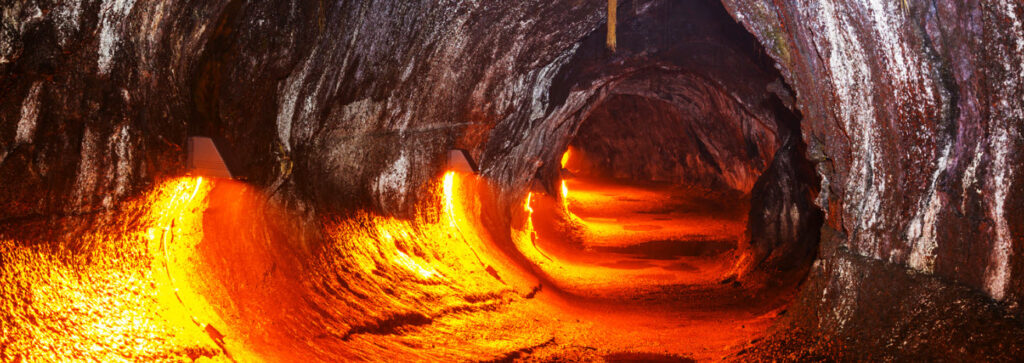
5. Kalaupapa National Historical Park
Kalaupapa National Historical Park, located on the remote northern peninsula of Molokai Island, stands as a poignant reminder of Hawaii’s history with Hansen’s disease (leprosy). From 1866 to 1969, the Kalaupapa Peninsula served as an isolation settlement for individuals diagnosed with Hansen’s disease, where they were forcibly separated from their families and society.
Today, the park is dedicated to preserving the memories and experiences of the people who lived there, offering visitors a deep and moving insight into their lives and resilience. The park’s stunning natural beauty, with its dramatic sea cliffs and serene landscapes, contrasts with the tragic human history it commemorates.
Access Requirements
- Permission to Visit: Access to Kalaupapa National Historical Park is strictly controlled to protect the privacy and property of the residents. Visitors must be at least 16 years old and obtain permission from the State of Hawaii’s Department of Health.
- Tours: Visitation is primarily through guided tours, which must be arranged in advance with authorized tour operators. Independent travel within the park is not allowed.
- Transportation: Access to the peninsula is either by a small plane to Kalaupapa Airport, by hiking or riding a mule down the steep trail from topside Molokai, or by boat (weather permitting).
Location
Kalaupapa National Historical Park is situated on the northern shore of Molokai Island. The main access points to Molokai are from Honolulu or Maui by air. The trailhead for the hike or mule ride down to Kalaupapa is near Pala’au State Park on Molokai.
Things to Do
- Guided Tours: The only way to explore the park is through a guided tour, which covers the history of the settlement, the lives of its residents and the natural beauty of the area.
- Saint Damien and Saint Marianne Cope Sites: Learn about the lives and contributions of Saint Damien and Saint Marianne Cope, who dedicated their lives to caring for the settlement’s residents.
- Scenic Views: The peninsula offers breathtaking views of the highest sea cliffs in the world and the surrounding Pacific Ocean.
Nearby Accommodation
- Topsides Molokai: Accommodations are available in the towns of Kaunakakai, Kualapu’u and Maunaloa where visitors can find hotels, bed and breakfasts and vacation rentals. There are no accommodations available in Kalaupapa for visitors.
- Camping: While there’s no camping allowed in Kalaupapa, there are camping facilities elsewhere on Molokai, such as in Pala’au State Park.
Additional Tips
- Book in Advance: Due to the restricted access and the requirement for guided tours, it’s essential to plan your visit well in advance.
- Prepare for the Trail: If you choose to hike or ride a mule down the trail, be prepared for a strenuous journey with steep descents and switchbacks.
- Respect the Community: Remember that Kalaupapa is not just a historical park but also a community. Visitors are guests and should act respectfully towards residents and their environment.
Visiting Kalaupapa National Historical Park offers a unique and profound experience, blending natural beauty with a deep historical significance. It’s a place of reflection, remembrance and understanding, providing a powerful connection to the resilience of the human spirit in the face of adversity.
6. The Pearl Harbor National Memorial
Whilst not a national park as such, The Pearl Harbor National Memorial, located on the island of Oahu, serves as a solemn reminder of the events of December 7, 1941, when Japan launched a surprise attack on the United States naval base at Pearl Harbor. This pivotal moment in history led directly to the United States’ entry into World War II and the memorial honors the more than 2,400 service members and civilians who lost their lives on that day.
It is a place of reflection, education and remembrance, offering visitors the opportunity to learn about the impact of the attack and the broader context of World War II in the Pacific. The site includes several key attractions such as the USS Arizona Memorial, which stands directly above the sunken battleship USS Arizona, the final resting place for many of the ship’s crew.
Access Requirements
- Entrance Fees: There is no entrance fee to visit the Pearl Harbor National Memorial, but there is a fee for the boat tour to the USS Arizona Memorial.
- Reservations: Tickets for the USS Arizona Memorial are in high demand. While a limited number of walk-in tickets are available each day, it is highly recommended to reserve tickets in advance online.
- Operating Hours: The memorial is open daily, except for Thanksgiving Day, December 25, and January 1. Hours of operation can vary, so it’s advisable to check the official website for the most current information.
Location
The Pearl Harbor National Memorial is located about 10 miles west of Honolulu, on the south coast of Oahu. It is easily accessible by car, bus or shuttle from downtown Honolulu and Waikiki.
Things to Do
- USS Arizona Memorial: Visitors can take a boat tour to the USS Arizona Memorial, where they can see the sunken battleship below and pay their respects to those who lost their lives.
- Visitor Center Exhibits: The visitor center features two museums that provide historical context about the attack on Pearl Harbor and its aftermath.
- USS Bowfin Submarine Museum & Park: Explore the USS Bowfin, a World War II submarine and learn about submarine warfare.
- Battleship Missouri Memorial: Tour the USS Missouri, where Japan formally surrendered to the Allies, marking the end of World War II.
- Pacific Aviation Museum: This museum offers insights into the aviation history of the Pacific region during World War II, featuring restored aircraft and personal stories of aviators.
Nearby Accommodation
- Honolulu and Waikiki: A wide range of accommodation options are available in Honolulu and Waikiki, from luxury resorts to budget-friendly hotels and vacation rentals. These areas provide convenient access to Pearl Harbor and other attractions on Oahu.
- Aiea: Closer to the memorial, Aiea offers several hotels and is a good option for those looking to stay near Pearl Harbor.
Additional Tips
- Security Measures: Security is tight at the Pearl Harbor National Memorial. Bags are not allowed on the premises, but storage facilities are available for a fee.
- Planning Your Visit: Allocate at least half a day to explore the memorial and its attractions fully. If you plan to visit multiple sites, such as the USS Bowfin, Battleship Missouri and Pacific Aviation Museum, consider dedicating a full day.
- Respectful Behavior: As a site of significant loss and historical importance, visitors are encouraged to behave respectfully throughout their visit.
Visiting the Pearl Harbor National Memorial offers a profound experience, connecting visitors with a critical moment in U.S. and world history. It’s a place for reflection, education and honoring the memory of those who served and sacrificed during World War II.

Book your trip to Hawaii here!
7. The Papahānaumokuākea Marine National Monument
The Papahānaumokuākea Marine National Monument is one of the largest marine conservation areas in the world, encompassing nearly 583,000 square miles of the Pacific Ocean—an area larger than all the national parks in the United States combined. Designated in 2006 and later expanded, it stretches from the Northwestern Hawaiian Islands to the atolls and small islands extending to Midway Atoll, near the end of the Hawaiian Archipelago.
This vast and remote area is home to more than 7,000 marine species, of which a quarter are unique to Hawaii, including threatened and endangered species like the Hawaiian monk seal and the green sea turtle. Papahānaumokuākea is also of great cultural and spiritual significance to Native Hawaiians, embodying the deep connection between the sea, the land and the Hawaiian people.
Access Requirements
- Permits: Due to its status as a highly protected area, access to Papahānaumokuākea is extremely limited and primarily available to researchers and Native Hawaiian practitioners. Recreational visits are restricted, and permits are required for all types of entry.
- Visitation: There are occasional opportunities for the public to visit Midway Atoll, one of the few areas within the monument that can accommodate visitors, but these are typically organized through specific educational or volunteer programs.
Location
The monument is located in the Northwestern Hawaiian Islands, stretching from Nihoa Island to Kure Atoll, including Midway Atoll. It lies northwest of the main Hawaiian Islands and is accessible only by boat or plane, with trips originating from the main islands, typically Oahu.
Things to Do
Given the restricted access, traditional tourist activities are not applicable for Papahānaumokuākea. However, for those able to visit through sanctioned programs or research initiatives, activities may include:
- Wildlife Observation: The area is a haven for millions of seabirds, marine mammals and other marine species.
- Cultural Practices: For Native Hawaiian practitioners, visits may involve engaging in traditional cultural and spiritual practices.
- Environmental Conservation: Participating in conservation efforts, such as marine debris cleanup or wildlife monitoring, is a primary activity for visitors.
Nearby Accommodation
Since the monument is located in a remote part of the Pacific Ocean, there are no accommodations within it. The closest accommodations would be in the main Hawaiian Islands, particularly on Oahu, from where expeditions to the monument typically depart. Oahu offers a wide range of lodging options, from luxury resorts in Waikiki to more modest hotels and vacation rentals.
Additional Tips
- Educational Resources: For those interested in learning more about Papahānaumokuākea but unable to visit, there are extensive online resources, virtual tours and documentaries available that explore the natural and cultural significance of the monument.
- Support Conservation Efforts: Even if you can’t visit, there are ways to support the conservation and research efforts in Papahānaumokuākea through donations or by participating in local conservation programs that benefit the broader Hawaiian ecosystem.
Visiting Papahānaumokuākea Marine National Monument in person may be out of reach for most, but its existence is a reminder of the importance of preserving and respecting our natural and cultural heritage. It stands as a global example of conservation and the interconnectedness of humanity and the natural world.
Conclusion
There you have it, my 7 best National Parks in Hawaii. I hope it has been helpful and as usual, please let me know of your experiences here or if there are any other must visit locations that I need to add.
Also, please do not hesitate to comment below if you have any questions, concerns, or corrections or would like me to check anything else out for you.
Until next time.
Have fun
Paul
